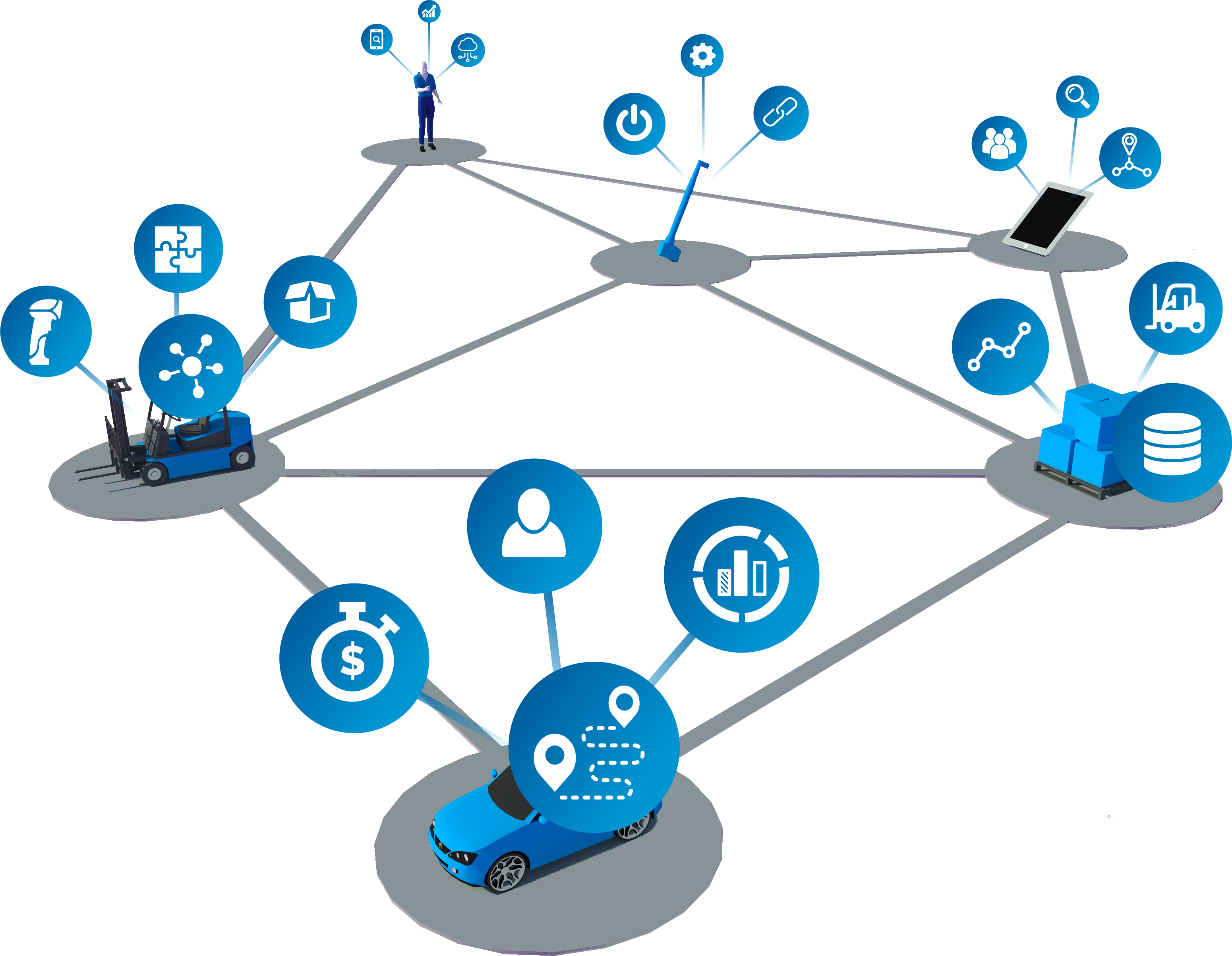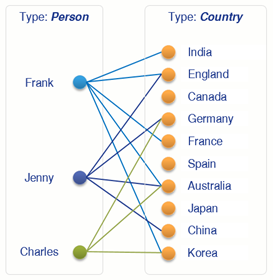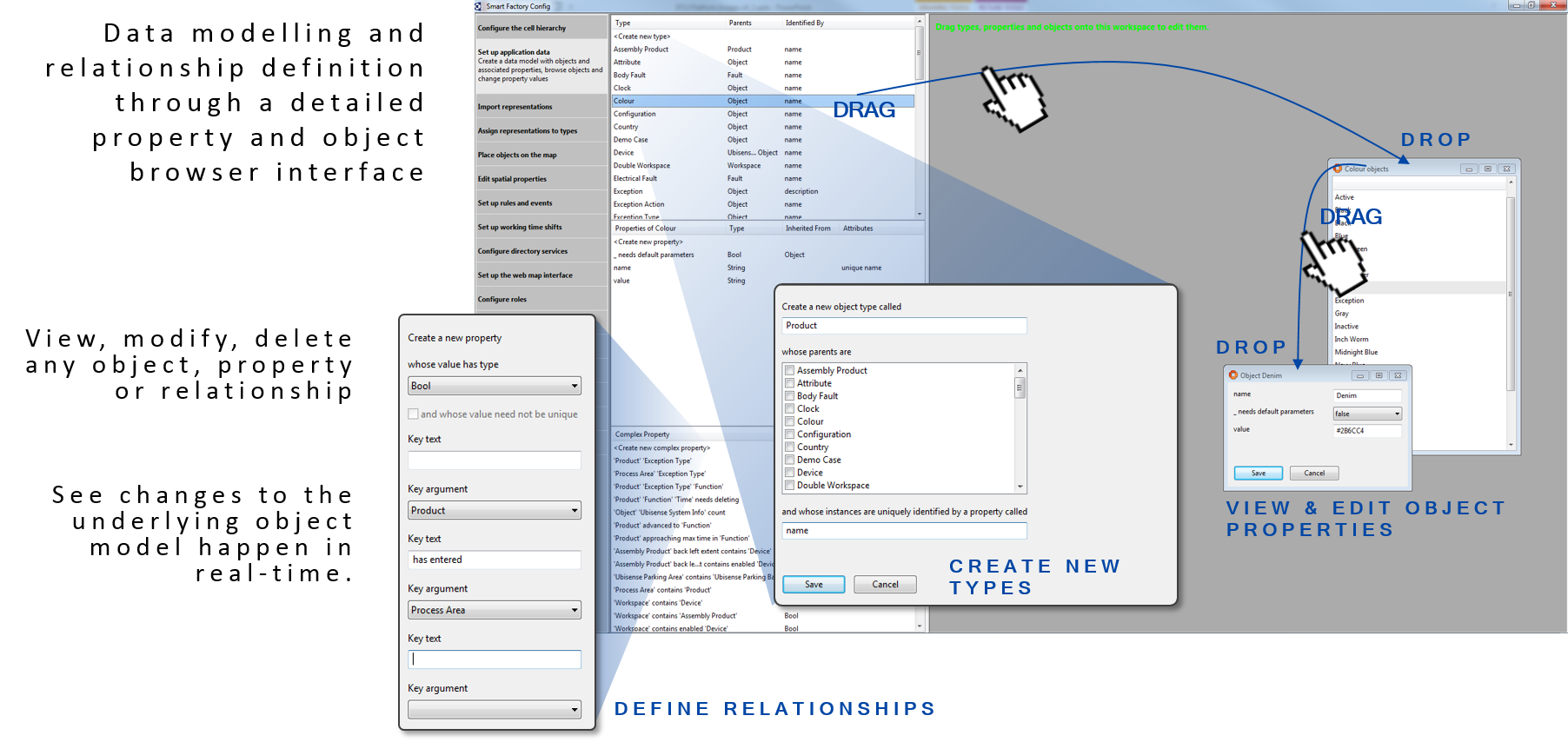Business object properties

Define data models to support context-aware business applications, tightly integrated with location data
Summary
Business object properties provides the following capabilities:
- User-extensible definition of functional and relational properties of types
- Creation and deletion of properties
- Query, creation, update and deletion of property assertions
- Query, creation, editing and deletion of 3D spatial properties of objects and spatial relationships between objects
SmartSpace allows the definition of relationships between objects by using either Simple Properties or Complex Properties.
Simple Properties
SmartSpace enables developers to flexibly create the types necessary to define a new application data model. User-defined types are created with appropriate properties, which can be any of the basic numeric or string types as well as user-defined types already defined in the data model. In SmartSpace, these are called Simple Properties.
Types which represent real-world objects can include one or more Space Properties, which are the geometric extents (zones) defined around the object that move and interact with the spaces of other object types in the data model when objects are given a location.
Additionally, multiple inheritance is fully supported, so that new types can be created from a combination of parent types which own the properties required.
Complex Properties
By using Simple Properties, one-to-one and many-to-one relations between objects can be specified. Complex Properties allow the inclusion of joins between types so that one-to-many or even many-to-many relations can be defined. This is really valuable when it becomes necessary to store or operate on sets of data, or some conditional fact must be asserted based on the state of multiple objects in the data model.

Where a relation between types is a fact, whether it is either true or false, the relation must be qualified by some underlying logic. This relation must be asserted either by an integrated third-party business system or through the SmartSpace Business rules engine (whose logic is implemented using the Rules engine developer).

User Interfaces
The Type and object definition feature includes a full development and object explorer thick-client GUI, which provides a drag-and-drop interface for creating new types, instantiating new objects, and interrogating and editing object properties and states.
